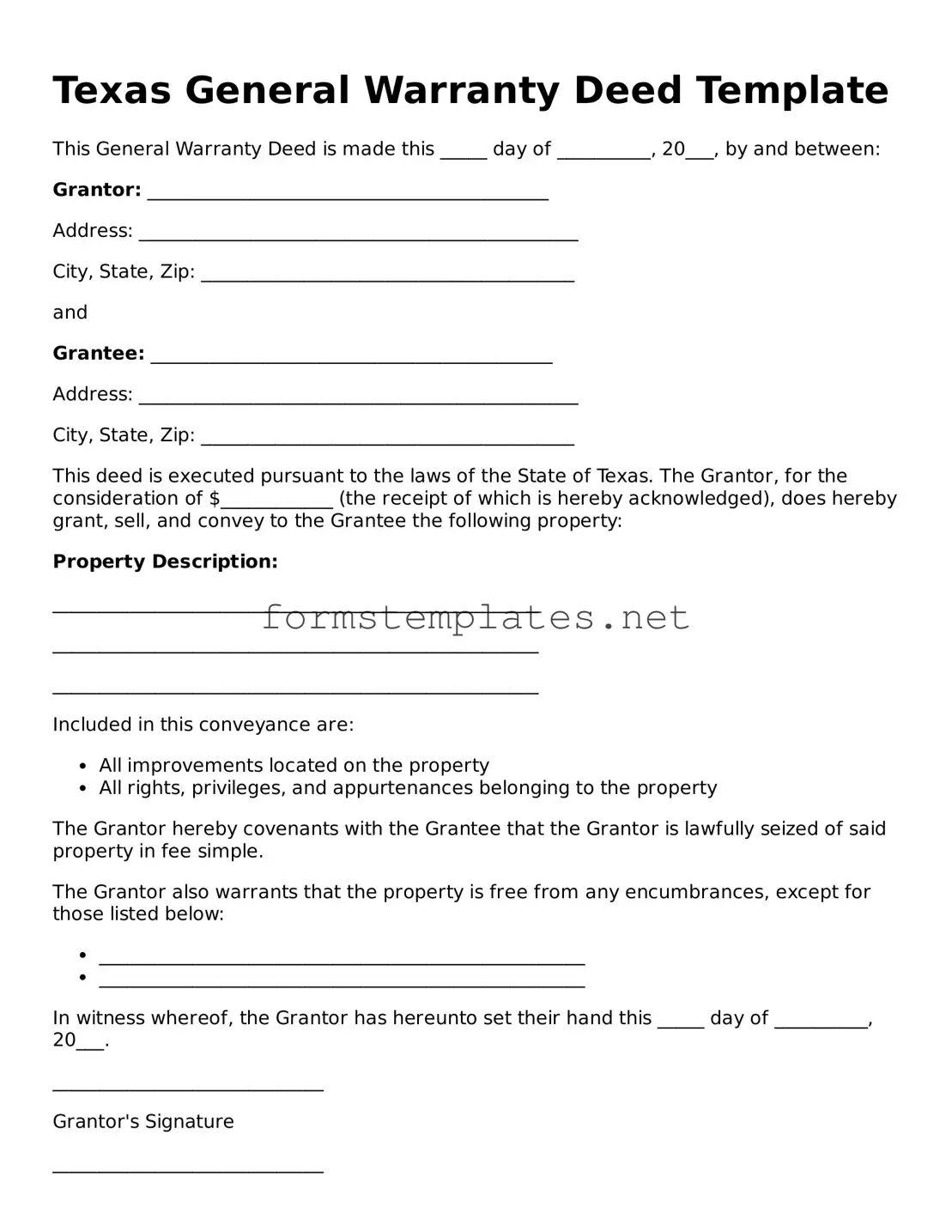Texas General Warranty Deed Template
This General Warranty Deed is made this _____ day of __________, 20___, by and between:
Grantor: ___________________________________________
Address: _______________________________________________
City, State, Zip: ________________________________________
and
Grantee: ___________________________________________
Address: _______________________________________________
City, State, Zip: ________________________________________
This deed is executed pursuant to the laws of the State of Texas. The Grantor, for the consideration of $____________ (the receipt of which is hereby acknowledged), does hereby grant, sell, and convey to the Grantee the following property:
Property Description:
____________________________________________________
____________________________________________________
____________________________________________________
Included in this conveyance are:
- All improvements located on the property
- All rights, privileges, and appurtenances belonging to the property
The Grantor hereby covenants with the Grantee that the Grantor is lawfully seized of said property in fee simple.
The Grantor also warrants that the property is free from any encumbrances, except for those listed below:
- ____________________________________________________
- ____________________________________________________
In witness whereof, the Grantor has hereunto set their hand this _____ day of __________, 20___.
_____________________________
Grantor's Signature
_____________________________
Grantor's Printed Name
_____________________________
Grantee's Signature
_____________________________
Grantee's Printed Name
STATE OF TEXAS
COUNTY OF ______________________
Before me, the undersigned authority, on this _____ day of __________, 20___, personally appeared ____________________________________, known to me to be the person whose name is subscribed to the foregoing instrument, and acknowledged to me that they executed the same for the purposes and consideration therein expressed.
Given under my hand and seal of office, this the _____ day of __________, 20___.
_____________________________
Notary Public, State of Texas
My commission expires: _____________________________
